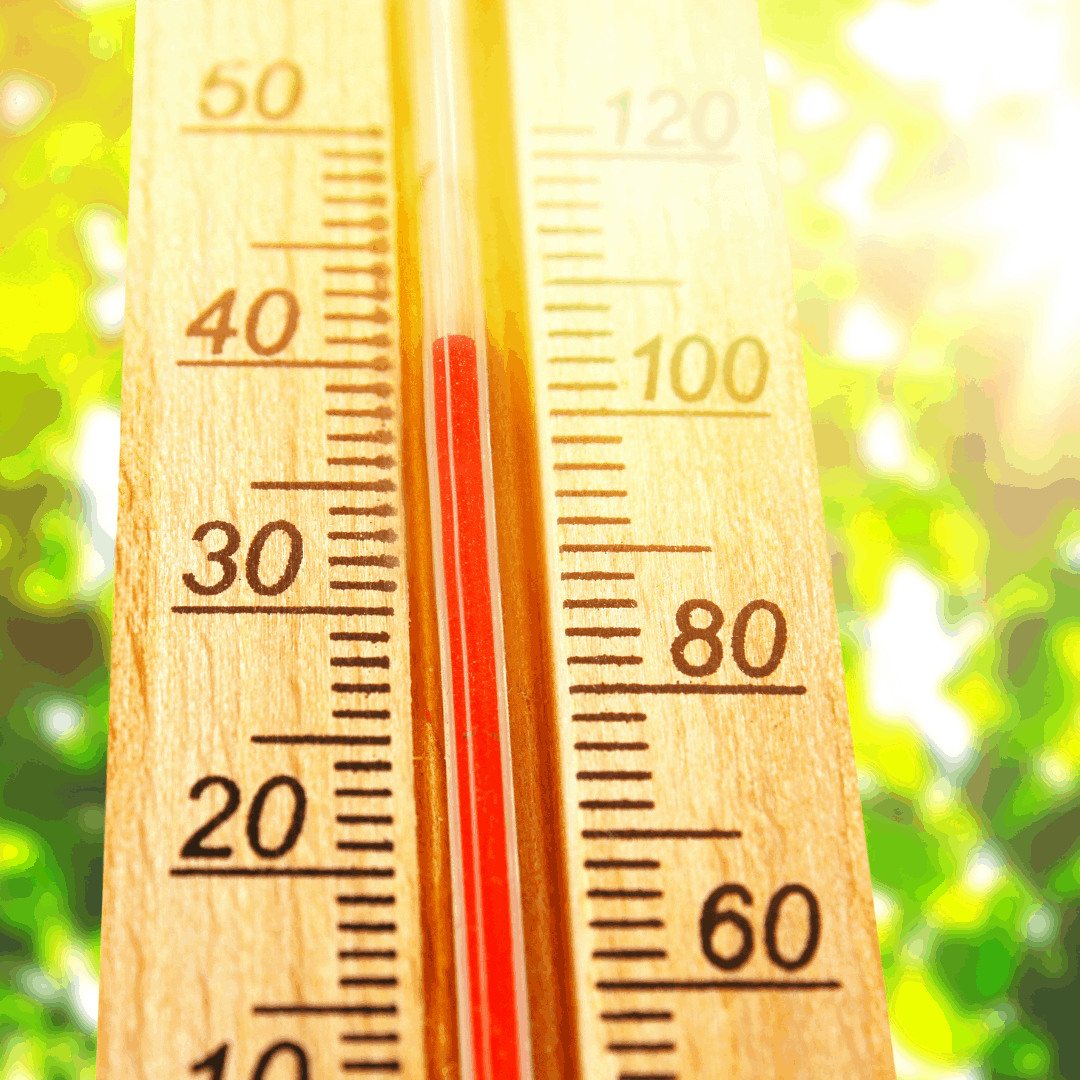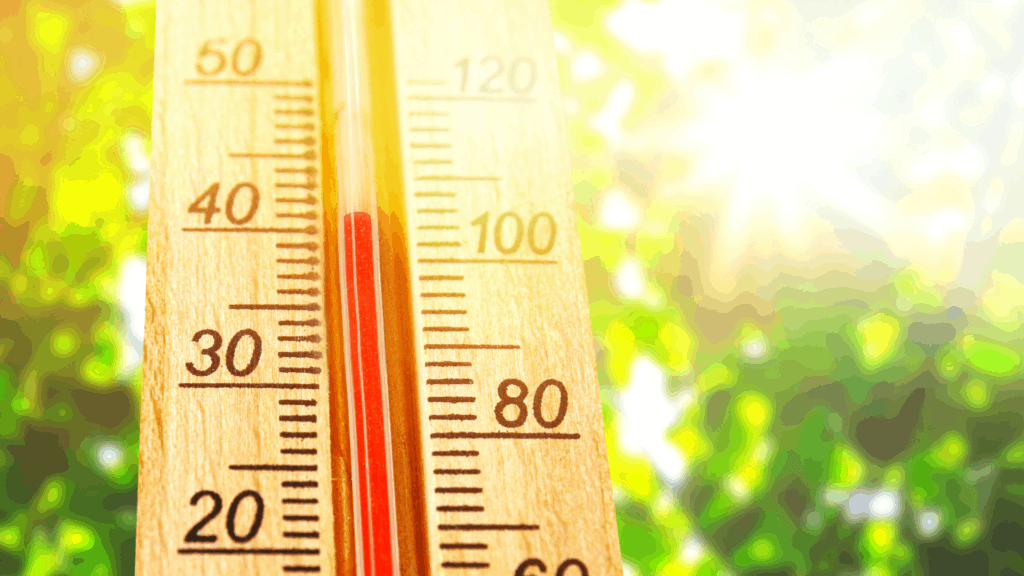

Weather conditions can be very important at job sites, especially for those working outside or in small areas without air-conditioning. Construction workers, HVAC technicians, and manufacturers are among many professions whose health and safety is impacted by the weather.
The temperature in Pennsylvania can be unpredictable, and sometimes it reaches or falls to dangerous levels. Extremes of both hot and cold can pose dangers to employees. Learn about the risks of working in severe hot or cold conditions.
July is usually the hottest month for Pennsylvania, with average highs in the mid-80°F’s. It’s not uncommon, though, for temperatures to reach upwards of 100°F. Hot working conditions can be dangerous. One of the primary risks is heat stress. Heat stress (or heat injury) occurs when hot, humid temperatures prevent the body from properly sweating and cooling itself. It can be exacerbated by factors such as age, increased weight, and pre-existing conditions such as heart disease, diabetes, and respiratory illnesses like asthma. To prevent heat stress, it is important to hydrate and practice safe sun practices such as wearing a hat and taking planned breaks in the shade.
In addition to heat stress, hot temperatures also increase the risk for other workplace injuries. Dehydration and heat-related fatigue can impair cognitive functions, causing workers to lose focus or have slow reflexes. High temperatures increase the risk of injury due to falls, collisions with an object, overexertion, and more.
Heat stress can take many forms. If you experience any of the following symptoms, don’t hesitate to let your supervisor know. Left untreated, hot weather injuries can be serious and sometimes fatal.
Heatstroke
One of the most serious forms of heat stress, heat stroke, can be life-threatening and requires emergency treatment. Heatstroke occurs when the body’s temperature rises to or above 103°F. Left untreated, heatstroke can cause injury to the brain, heart, kidneys, and muscles. Symptoms of heatstroke include:
Heat Exhaustion
Loss of salt and water due to excess sweating can lead to heat exhaustion. Heat exhaustion is most common in high humidity levels, and if left untreated can lead to heatstroke. Advanced age and high blood pressure can increase your risk. Symptoms include:
Heat Syncope
Heat syncope (orthostatic dizziness) is caused by lack of blood flow to the brain from extremely hot weather. It can be the result of dehydration or not being acclimated to the hot weather, and can be exacerbated by elevated heights. Symptoms typically occur after standing for long periods of time or getting up after sitting or reclining. They include:
Heat Cramps
Heat cramps are involuntary muscles spasms that can be prolonged and painful. They are caused by prolonged physical activity in hot weather. In addition to muscle spasms, symptoms include pain in the abdomen, arms, or legs.
Rhabdomyolysis
Rhabdomyolysis is caused by the death of muscle tissue, brought on by physical exertion in high temperatures. As muscle cells break down, they release enzymes into the blood that can lead to organ failure, seizures, kidney problems, coma, and even death. Rhabdomyolysis can cause symptoms or be asymptomatic. Symptoms include:
Heat Rash
Heat rash is a skin irritation caused by sweating in hot, humid weather. Though a more minor heat injury, it can be very uncomfortable, resulting in small, painful blisters or red pimples in skin folds where sweating occurs. This can include on the neck, upper chest, under the breasts, armpits, elbow creases, and groin.
Temperatures in Pennsylvania usually reach their lowest in January, with average highs of about 30°F and lows of 12°F. Snowfall can be heavy, and freezing temperatures can lead to icy roads and walkways.
Low temperatures during winter months can result in many cold weather injuries and workplace hazards, especially for those working outside. Sleet, snow, and ice can all lead to slips and falls, which can result in bruises, sprains, and contusions, in addition to head and nerve injuries from landing wrong.
Winter months can also result in cold stress injuries and illnesses, some of which can be life-threatening:
Hypothermia
Hypothermia is caused by the body’s temperature falling dangerously low, typically under 95°F, due to prolonged exposure to freezing conditions. Left untreated, hypothermia can be fatal. Symptoms include:
Extreme cold can cause muscle tissues to freeze and crystallize, resulting in frostbite. Extremities, such as fingers and toes, are more prone to frostbite. It is also common in the nose, ears, and cheeks. Extreme cases of frostbite can result in amputation of the affected appendages or limbs.
Early frostbite symptoms include skin that is red or painful, which can later become white or a gray-yellow. Affected areas are usually numb and may feel firm and waxy. Immediate treatment is important to prevent lasting damage.
Trench Foot
Trench foot (immersion foot) occurs when prolonged wet and cold conditions disrupt blood circulation to the feet, which can cause skin tissue to die (known as gangrene). In severe cases, amputation may be necessary. Symptoms of trench foot include:
Chilblains
Chilblains (pernio) is the painful inflammation of skin blood vessels. It is caused by warming too quickly after cold temperatures. Symptoms typically affect extremities such as the nose, ears, toes, and fingers, and can include:
If you or someone you encounter are experiencing cold-stress injury symptoms, seek medical care immediately. If professional help is not available, begin warming the injured person with these steps:
Your employer has a responsibility to keep your working conditions safe in both hot and cold weather. This includes health risks due to extreme high or low temperatures. Proper clothing is vital to keeping your body temperature at an average level, in addition to necessary breaks and hydration. Hazards such as water or ice should be noted and designated areas should be arranged for wet gear.
If you or a loved one have suffered a work-related heat stress or cold stress injury or illness, you may be entitled to workers’ compensation. Dugan & Associates workers’ compensation lawyers will work to pursue fair and just compensation for loss of earnings, medical expenses, and damages. Contact us today online or by telephone at 412-353-3572.
"*" indicates required fields